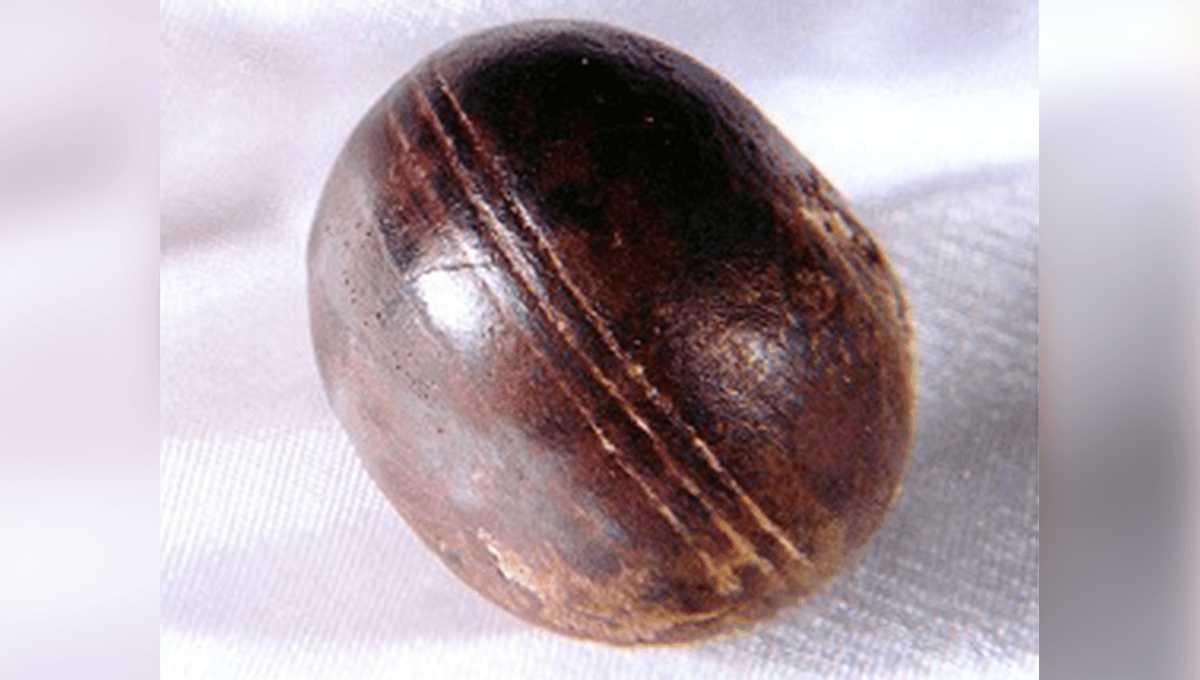
Klerksdorp spheres, found inside pyrophyllite deposits mined in South Africa, are weird. Looking like tiny ancient cricket balls, with seam-like lines around their middle, it’s easy to see why they became the subject of conspiracy theories involving aliens and ancient, forgotten civilizations.
In articles in the 1980s, they were speculated to be made by “a higher civilisation, a pre-flood civilisation about which we know virtually nothing”, while the same museum curator who said this claimed that the spheres rotated of their own accord while locked in a “vibration-free” display case.
Pseudo-scientists claimed that the spheres could only be manufactured, despite being found in 3-billion-year-old rock, while even pseudo-er scientists believed them to be proof of aliens.
The claims about the spheres caught the attention of geologist Bruce Cairncross in 2006, who wrote that he had been amused by an article that described them as “mystery spheres”, and by one program’s choice to have a psychic examine the stones, declaring them to be the remains of an ancient spaceship.
Cairncross offered up a rational explanation for the spheres, found in a geological formation known as the Dominion Group. The feature is made of conglomerate, with layers of volcanic lava that were deposited on top. After a lot of pressure and heat, the layers of volcanic rock became pyrophyllite, the casing in which the Klerksdorp spheres were found.
The spheres are known as concretions: spherical, elliptical, or oblate objects made of different minerals to the host rock, and are fairly common, with thousands having been found around the world. They are often found in fine-grained rocks, like pyrophyllite, as it allows for the movement of water.
“They form by precipitation from an aqueous solution and consist of minerals crystallized in the host rock,” Cairncross explained.
The spheres are spherical (or slightly off-spherical) as they form around a tiny grain of mineral in a solution containing iron, calcium, and other elements.
“Because the host rock is evenly textured all round the growth of the concretion takes place, unrestricted in all directions, as a 360-degree, three-dimensional sphere,” Cairncross writes, adding that if the liquid is moving or the rock surrounding it is not the same consistency in all directions, the shape can become distorted.
The lines across the spheres are caused by imprints from the host rock, which was built up in layers over a long, long time, leaving the layered effect.
Meanwhile, the mystery of why the sphere supposedly spun “on its own” was explained by the curator of the Klerksdorp Museum, after which the spheres are named.
“Some years ago I put the ball back to its original position (on a glass shelf) during a journalist’s visit and he tried to make a sensation of it,” Mr R Marx explained. “It is quite natural that it will rotate a bit as it is round and we have many earth tremors due to (gold) mining activities.”
Source Link: Klerksdorp Spheres: Strange Spheres Found In 3 Billion-Year-Old Rock